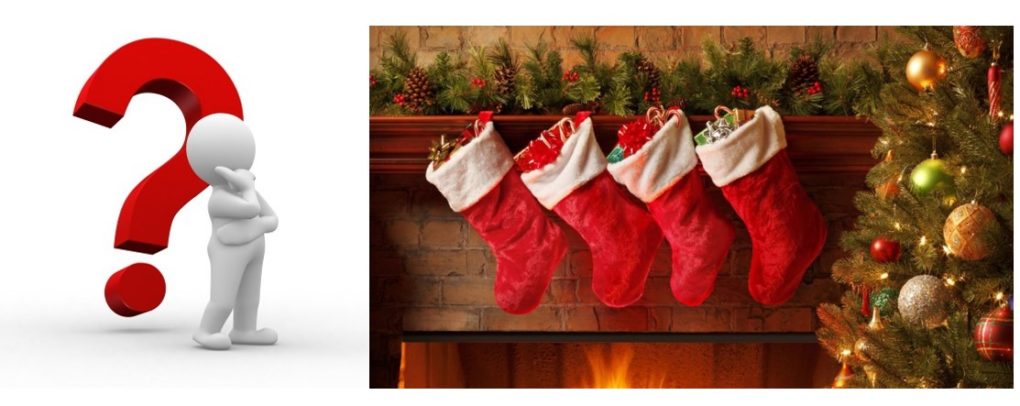Why We Must Re-Think Christmas Now
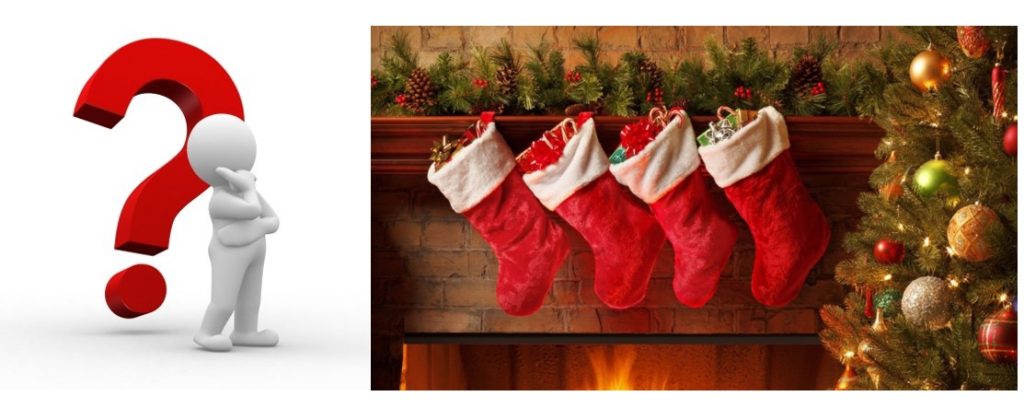 Op-Ed by Neenah Payne
Op-Ed by Neenah Payne
I LOVED Christmas growing up and looked forward to it all year! The season began when my father and I bought a Christmas tree which my brothers and I decorated. My mother would take me to the department store to see Santa and to tell him what I wanted for Christmas.
On Christmas morning, I woke up early and raced to the living room with my brothers to tear open the mounds of gifts our parents had bought us. That was followed by a really marvelous Christmas dinner which my grandfather joined us for every year. The magical day ended with a trip to my Aunt Elizabeth’s home where we were showered with yet more gifts. As a teenager, I went to her home to wrap the presents she had bought for the whole family.
I loved all the Christmas music. When a friend who was an Irish tenor sang “Oh, Holy Night,” it was so beautiful that is was enough to bring you to your knees. I went caroling with members of my singing class. In many ways, Christmas is a magical time — especially for kids.
Yet, as an adult, I discovered that Christmas is an overlay for a much deeper tradition — one we are unconsciously celebrating in a very diluted (corrupted) form. However, it is very difficult for anyone to question the culture they were raised in. Since our culture is all we know, there is no basis for raising questions.
10 Cultural Heritage Questions You Should Ask Your Relatives points out: “Documenting your family’s culture and history is important. In this post, learn 10 cultural heritage questions that you should be asking your relatives. Many people don’t really think of themselves or their family as having a particular culture. For most people, it’s “just how things were done”.
Yet, fortunately, we have a wonderful basis for understanding what many of our Christmas traditions are based on and are hiding. Being unware of this deeper reality is robbing us of the real gift of the season that we desperately need to rediscover now for our own survival as we face the Sixth Mass Extinction.
Understanding Our Christmas Traditions
Our Christmas traditions have turned the holiday (Holy Day) into a shopping season. The season begins right after Thanksgiving with “Black Friday” when people have killed others trying to get “bargains.” Christmas turns us into mega consumers. Many people go into debt trying to keep up with expectations. Yet, many gifts are not things people really need or want.
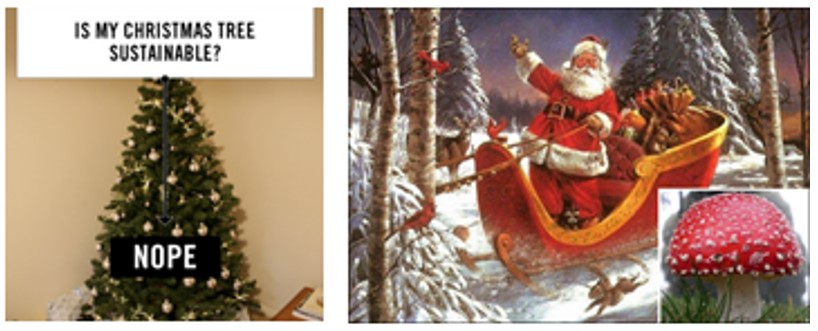
We kill an estimated 25-30 million pine trees in the US each year to use them for a couple of weeks as decoration and then discard them as trash. Killing trees to celebrate life: the strange reality of Christmas tree production says:
Since there has been a strong theological tendency within Christianity to view nature as there for human use, they had no problem killing the evergreen trees for their own religious purposes. However, it seems rather ironic that Christians kill something to celebrate a holiday based on the birth of their savior, use it for a few weeks and then discard it like any other commodity. It seems that instead of encouraging people to recycle their Christmas trees, we might want to ask more fundamental questions like do we even need to grow these kinds of trees solely for the purpose of using them for a few weeks during a religious holiday?
Our Christmas traditions ill serve us and the environment. When we learn what those traditions are based on, we understand their deeper significance and can perhaps find more meaningful ways to celebrate the season.
Why We Celebrate Christmas The Indigenous Way explains that although America is a largely Christian nation and Christmas commemorates the birth of Christ, many of the ways we celebrate Christmas have nothing to do with Christianity. For example, who is Santa Claus? Why does he live at the North Pole, dress in red and white, fly through the night sky in a sled led by reindeer? Why does he come down through the chimney to bring gifts? Why do we bring pine trees indoors and decorate them? Why do we hang stockings by the fire place?
The answers to all those questions reveal that those Christmas traditions are based on the traditions of the Sami – an indigenous people in Scandinavia! Many of the ways we celebrate — one of our greatest Christian holidays — are based on pagan traditions Christianity tried to wipe out during the 600 years of the very brutal Inquisition!
Perhaps those traditions survived (hidden) because they have SUCH deep meaning for us and we desperately need what they are trying to teach us — especially now. We managed to hang onto them by hiding them behind Christmas. Yet, they lead us to a very different understanding of ourselves and our world. What can we learn now by understanding what we are really celebrating on Christmas?
Is Santa A Shaman?
Is Santa Based on a Psychedelic Shaman?
Video by Matthew Salton
Many historians agree that the North American figure of Santa Claus can be traced back to a monk named Saint Nicholas of Myra, a bearded fourth-century Greek Christian with a penchant for charitable giving. St. Nicholas was presumably the basis for the Dutch Sinterklaas, patron saint of children, who donned a big, red cape and rode around on a white horse to visit children on the name day of Saint Nicholas, the sixth of December. According to folklore, Sinterklaas carried a red book in which he recorded a child’s behavior over the past year as having been good or naughty. Sinterklaas is said to have been slowly transformed into modern-day Santa by 1700s Dutch immigrants in the New World.
Could Magic Mushrooms Explain the Story of Santa Claus? explains that:
The story of Santa flying around Earth on Christmas Eve with his reindeer and sleigh is a Christmas staple popular enough to rival that of Jesus’ birth. But where did the idea of flying reindeer and a stealthy gift-giver squeezing down chimneys come from? One interesting theory claims the answer revolves around amanita muscaria: magic mushrooms.
Also see:
- Christmas, Amanita Muscaria, and Santa Claus
- Shaman Claus: The Shamanic Origins of Christmas
- Santa is a ‘shroom. And the reindeer are all tripping
Saami and Fly Agaric Mushroom
The Saami are the indigenous people of Northern Europe, a living remnant of the continent’s nomadic prehistory. Now numbering, by most accounts, less than 200,000, they are spread across the northern parts of Norway, Sweden, Finland, and Russia in an area known as Sáami. The northernmost indigenous people of Europe, they are part of the “Fourth World” that spans the North Pole from Siberia to Alaska.
Traditional Saami are reindeer herders whose homes are yurts and log cabins. The thrilling 1987 ski film Pathfinder, the first in the Saami language, documents the story of their founder and shows the similarity of the Saami’s lifestyle and worldview with those of many Native American cultures. Saami survival is dependent on the life and migrations of the reindeer — just as the Plains Indians depended on the buffalo and later the horse. In addition to being a source of food, clothing, and housing, the reindeer serve as means of transportation. Saami use reindeer-drawn sleighs.
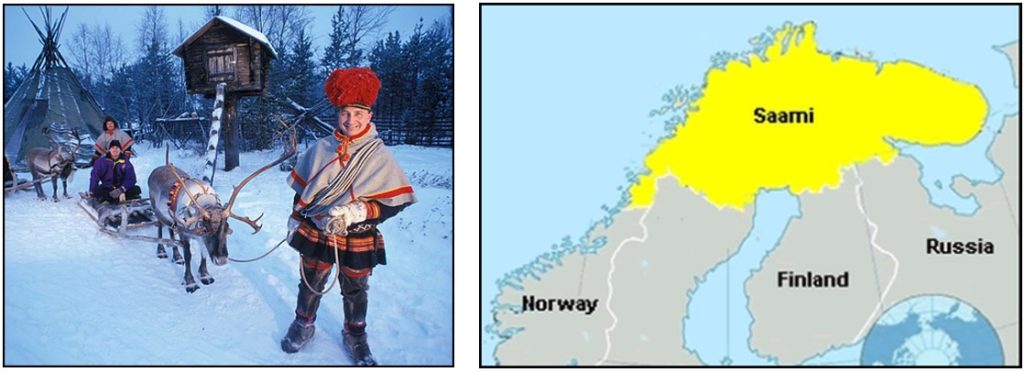
Shamans play a central part in Saami life. They reputedly mediate between Heaven and Earth, possess magical powers over wind and other elements, and are able to shapeshift and visit Jábmeájmoo, the Land of the Dead. When Christianity arrived in the High North late in the 17th century, shamans bore the brunt of the combined church-state assault on Saami independence. Their drums were singled out as instruments of the Devil and most of them were destroyed.
Saami shamans wear red and white hats to show that the red and white amanita muscaria (aka fly agaric) mushroom is their sacrament. They wear red and white capes to symbolize their flight through the air when they eat the mushroom on their most sacred night of the year, the Winter Solstice – the celebration of which begins on December 21 and ends on December 25.
The shamans gather the mushrooms and hang them on pine trees to dry. They put them in sacks and deliver them to each household by descending through the roof since the yurts are piled high with snow. The mushrooms are hung by the fire place to dry — just as stockings are hung on Christmas Eve in much of the US. The sacred red and white amanita muscaria mushroom is eaten on December 21, the Winter Solstice, to commemorate the return of the light and to provide a transcendental experience that is said to lead to enlightenment. Reindeer also like the mushroom and are said to “fly” when they eat it!
Santa Claus and Fly Agaric Mushroom
Like the Saami shamans, Santa Claus lives at the North Pole, wears a red and white hat and cape, carries a sack, and goes down the chimney of each home to deliver gifts around the Winter Solstice. We bring pine trees into our homes for Christmas and decorate them – just as Saami shamans put the mushrooms on pine trees. We hang socks filled with gifts by the chimney just as the Saami hang mushrooms by the fireplace to dry. Ho! Ho! Ho!
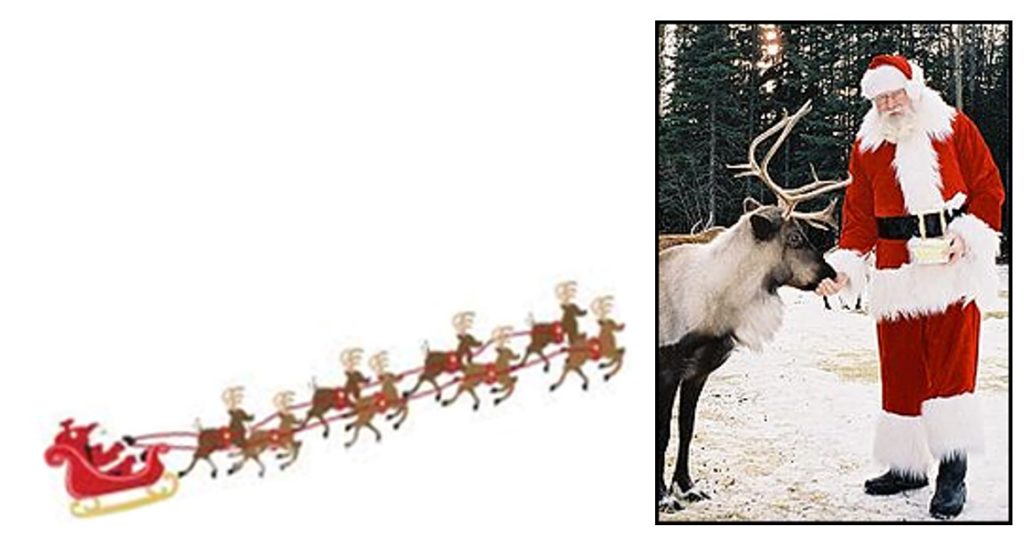
Santa Claus and our Christmas traditions preserve our connection to our indigenous roots — while hiding and disguising them. However, instead of delivering the magic mushroom which is a pathway to wisdom and enlightenment through direct experiential knowledge, Santa Claus brings gifts we often don’t need or want — and ties us to the material world, deepening our role as “consumers”. It turns a sacred holiday when we could grow wiser into a requirement to shop!
We adopted the form, but lost the meaning of the sacred ceremonies. We have turned Christmas into the biggest shopping season that now includes not just Black Friday after Thanksgiving, but Cyber Monday (and week) following Thanksgiving. There’s very little Enlightenment in those traditions.

European Americans Honor Their Indigenous Roots
Perhaps it’s not so strange that the Christian holiday begins with Black Friday when people sometimes kill each other for a “bargain” and includes the death of 25-30 million trees. Christianity was imposed on most of the indigenous peoples of Europe through 600 years of a brutal Inquisition in which 6-8 million women were tortured and put to death on the accusation of being “witches” if they questioned the Christian doctrine or just practiced their ancient herbal and healing traditions. That’s a holocaust the size of the one in World War II.
In the video below, Lyla June Johnston, a Native American whose father is of European descent, calls on Europeans and European Americans to discover their indigenous roots. She explains that in learning about indigenous cultures in the Americas, they are rediscovering their own ancient traditions.
This short episode is with Lyla June Johnston. Lyla June is poet, musician, educator, anthropologist, activist and community servant of Diné (Navajo), Tsétsêhéstâhese (Cheyenne) and European lineages. She holds a degree in Environmental Anthropology with honors from Stanford University and a degree in American Indian Education with distinction from the University of New Mexico. Her internationally acclaimed performances and speeches are conveyed through the medium of prayer, hip-hop, poetry, acoustic music and speech. Lyla’s personal goal is to grow closer to Creator by learning how to love deeper. Music in this episode is “Final Transmission Home” by Amaranth Cove.
Lyla June – Mamwlad Official Video
This Beltane, we are forgiving the persecution of an estimated 6-9 million women as “witches” in Europe with the release of our new music video, “Mamwlad.”
Two Worldviews Create Very Different Worlds
Christianity is associated with so much death — not just the brutal crucifixion of Jesus but also the murder of 6-9 million indigenous Europeans during the 600 years of the Inquisition. Yet, the culture of death had just begun. It got into full gear in 1492 when Columbus got lost at sea.
The Western worldview is based on the belief in the “survival of the fittest” which celebrates competition, consumption, hoarding, wealth, and greed. In the 1987 film Wall Street, Gordon Gecko, played by Michael Douglass, told us “Greed is good.” So, the 1% hoard most of the world’s wealth while billions of people have barely enough to eat. Forbes celebrates billionaires each year and corporate America focuses on the next quarter in the pursuit of infinite growth on a finite planet — a logical impossibility.
The Strange Garden of Eden Story shows how the Foundational Stories of the West and of Native America have shaped very different consciousnesses and have led to profoundly different results. Indigenous peoples are responsible for 80% of biodiversity.
The Native American worldview is based on responsibility for all life (including plants and animals, the air, water, earth) down through the next seven generations. Because Native Americans have operated like a “keystone species” for thousands of years, when the Europeans first came here, they could drink from any river, stream, or lake and there were several feet of top soil. Now, the water is so polluted, many people don’t trust even tap water and we have just 6” of top soil left — enough to grow food for just 60 years and we are facing the Sixth Mass Extinction.
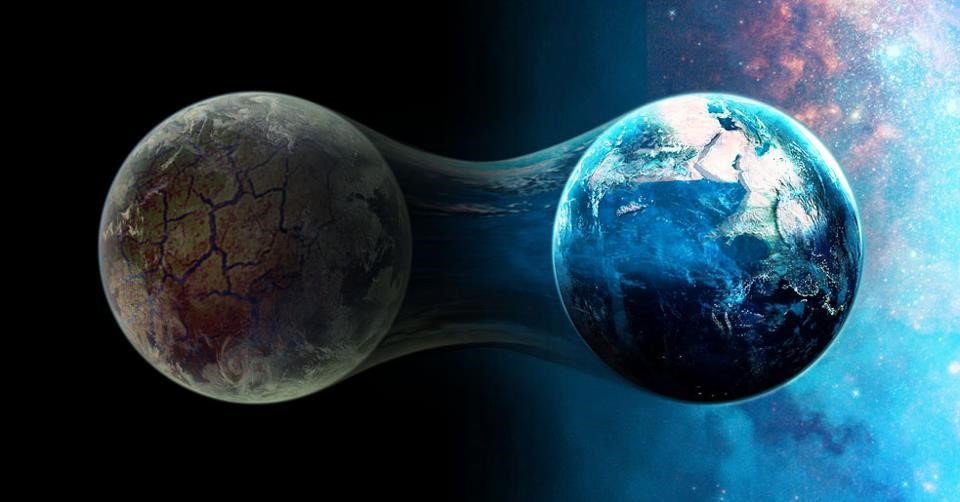
Since we are taught almost nothing about Native America in school and don’t see Indians in the legacy media, most Americans give no thought to the 500 Native Nations in the US. Many assume all the Indians died in the 19th century and believe their cultures were “primitive.” So, we are robbed of the opportunity to understand the depth and beauty of the indigenous worldview.
However, when people learn this much more sustainable and productive alternative, they see the critical importance of changing their thinking and lifestyles.
Importance of The Original Instructions
In the 2008 video Indigenous Native American Prophecy, actor Floyd Red Crow Westerman said Native Americans were told that they would see America come and go. He said, “In a sense, America is dying from within because they forgot the instructions on how to live on Earth”. He warned that people who do not know how to live spiritually on Earth likely will not make it. He explained that when Columbus came, that started the true First World War. By WWII, the indigenous population of the Americas had dropped from 60 million to 800,000! The Native American population in the US is currently 4.5 million.
Original Instructions: Indigenous Teachings for a Sustainable Future
My Articles About Native America in my Urban Gardens Revolutions site shows that a growing number of Native Americans are stepping forward now to help guide humanity from the brink. We just have to be wise enough now to listen and learn to follow.
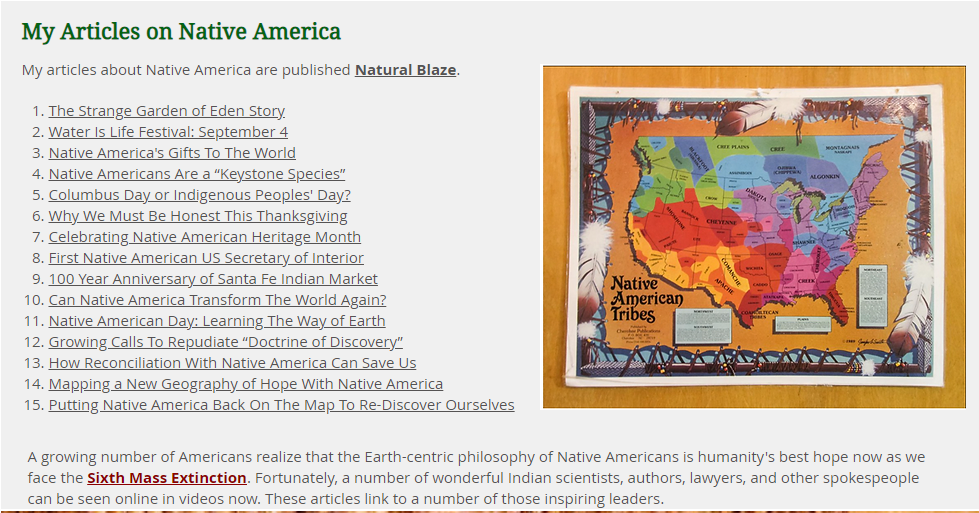
Neenah Payne writes for Activist Post and Natural Blaze
